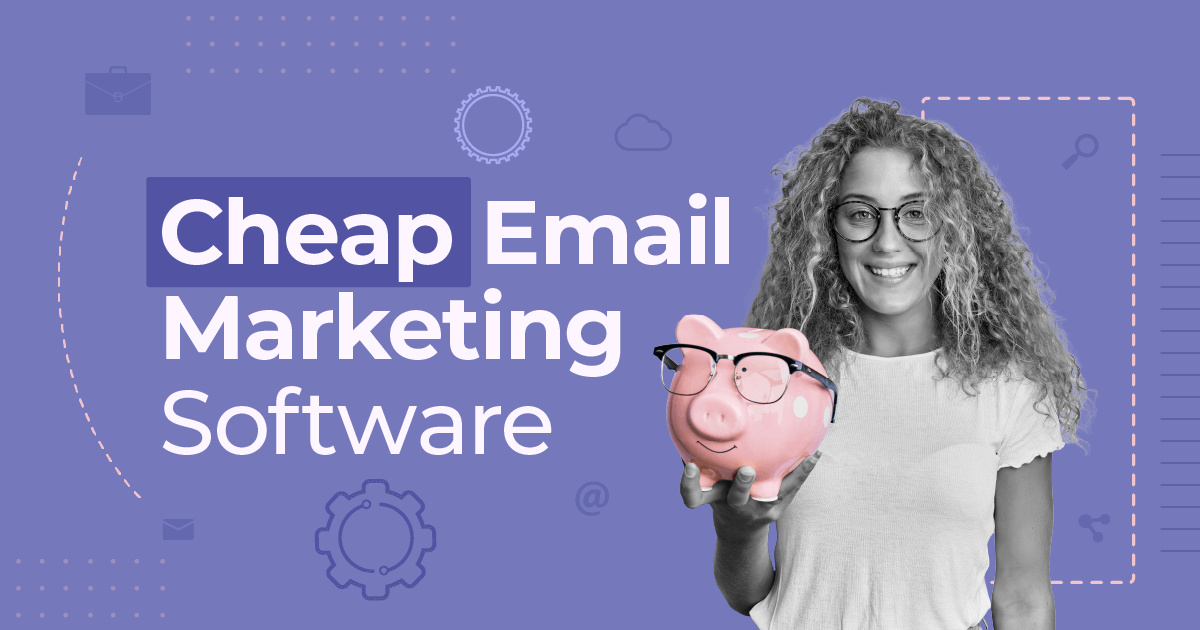
The Ultimate Guide to Email Marketing for Dentists [2025]
As a dentist, the daily grind involves far more than just dental work. You deliver exceptional patient care, manage medical supplies, and keep your booking schedule perfectly organized.
At the same time, you also need to manage your marketing and patient relationships. But how can you consistently attract new patients and retain your loyal ones without breaking the bank or getting lost in complex digital strategies?
Thankfully, there’s a cost-effective, beginner-friendly tool that can make a true difference to your practice: email marketing.
In this guide, we’ll explore the benefits and essential types of email marketing for dentists. Plus, you’ll learn how to set up a successful email marketing strategy to grow your practice.
Book more patients with email campaigns
Use Moosend’s beginner-friendy features to grow your practice.
Start freeWhy Email Marketing Matters for Dental Practices
Email marketing stands out as a highly profitable channel among healthcare professionals. According to recent email stats, you can earn $1 for every $36 you spend. Plus, its automation and personalization capabilities can not only save you time but also help you deliver an excellent patient experience.
Here are some of the key benefits of email marketing for dental clinics:
- Improves patient retention: Email allows you to consistently nurture relationships with both current patients and prospects. This includes sending helpful appointment reminders, timely follow-ups on visits, special offers, and loyalty programs.
- Refines booking management: Email marketing enables you to automate booking confirmation emails and reminders, maintaining an organized schedule and reducing no-shows.
- Lowers marketing expenses: Compared to more expensive advertising strategies like paid ads, email marketing is a cheaper solution. Plus, it lets you reach patients directly in their inboxes without relying on third-party platforms.
- Increases brand awareness: The more patients engage with your content, the stronger the connection with your brand becomes. This makes it more likely to schedule their next dental visit with your practice and refer others.
While email marketing has a gradual learning curve, it doesn’t require a deep marketing background. A good understanding of basic email marketing principles is just enough to start seeing results.
Popular Email Types for Dentists
Wondering what types of email marketing campaigns are suitable for your practice? Here are some ideas to get started.
Welcome emails
To start mailing patients and prospects, you first need their permission. This is called opting in. So, once someone has opted in, send them a welcome email to immediately start building the relationship.
Thank them for their trust and set expectations about the kind of content they’ll receive from you. You can also offer a preference center to let them choose the type of communication they’ll receive. This will give them control and reduce unsubscribes.
Welcome emails receive high open rates and can be easily set up through email automation software like Moosend or Constant Contact. To save time, you can choose a premade template, customize it using your platform’s editor, and build a professional-looking email without needing any design or coding skills.
For example, the design below can be a great fit:
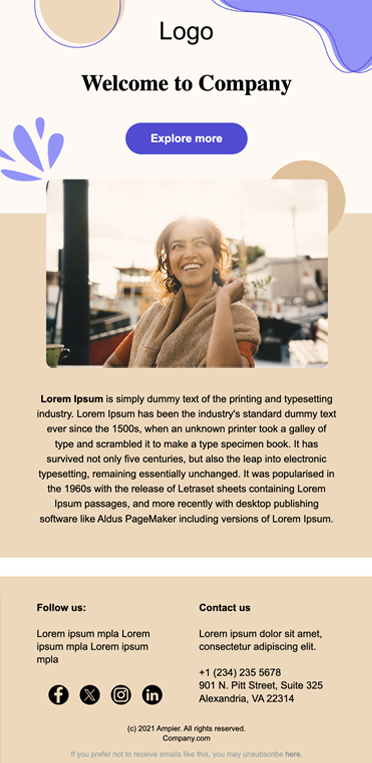
Booking confirmations
Booking confirmation emails reassure patients that their appointment is successfully scheduled. These transactional emails can be automatically triggered for patients who book appointments through a website, or you can send them manually when someone books via phone or in the clinic.
Successful booking confirmation emails include the date, time, and purpose of the appointment. You can also give patients the option to reschedule as long as it’s done two days in advance.
Reminder emails
Reminder emails can serve two main goals. First, they nudge patients one or two days before the appointment to reduce no-shows or last-minute cancellations. Ensure that you include all the important details: the date, time, address of your clinic, and the specific service they’ve booked.
You can also set up personalized emails to remind patients to book their annual teeth cleaning appointment, or prompt them to book follow-ups for more acute care services.
This template is perfect for relevant emails:
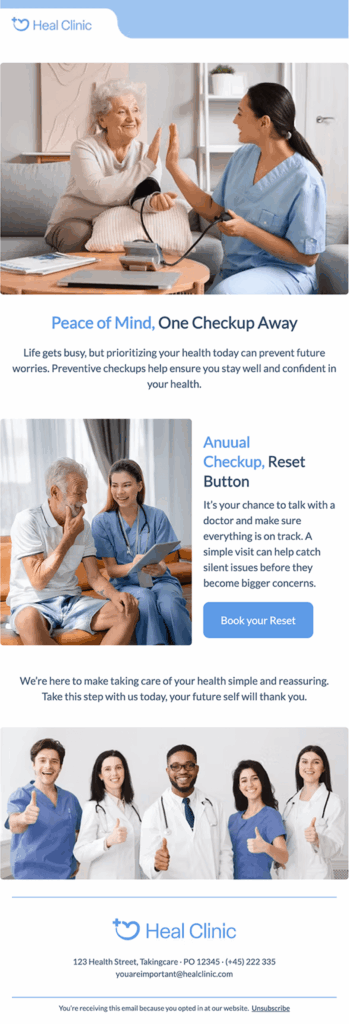
Promotional campaigns
To attract potential patients and delight existing ones, running promotional email campaigns is key. For example, offer special discounts for back-to-school checks or run giveaways for popular services such as teeth whitening. You can also share those initiatives on social media to maximize your reach and drive more signups for your email list.
Check out how Supersmile, an oral care brand founded by a dentist, promoted a unique product to get inspired:
Subject line: teeth stains are real, and we can block them

Moreover, use this marketing channel to spotlight new services or to run cross-sell campaigns. For instance, if a patient just had a cavity fixed, promote complementary services such as teeth cleaning, and vice versa. Upselling is also a valuable strategy, just ensure that the patients you’re targeting are really interested in this service.
For example, if a patient mentions during a routine check-up that they’ve been thinking about braces, follow up with an email that provides relevant information.
Educational emails
Another great email type to boost patient loyalty and satisfaction is providing them with valuable, educational content. For instance, share an infographic with oral health tips or a guide on how to choose sustainable dental products, an initiative that also highlights your values.
Willo blended email with event marketing and invited subscribers to an interesting webinar to showcase their business, offering a freebie to a lucky participant.
Subject line: You’re invited…

Referral campaigns
Social proof is a powerful marketing tool, especially within the healthcare sector. People actively seek out reviews and testimonials when choosing a service provider. Tap into this trust by asking your existing patients to refer your dentistry to their family and friends.
You can either send a standalone referral email campaign or include a dedicated section on other emails, such as appointment follow-ups. To make this initiative even more appealing and increase participation, consider sharing an incentive, such as a discount for their next visit or a gift card.
Re-engagement emails
Re-engagement emails help you reconnect with patients who haven’t booked in a while, giving you a chance to win them back before they leave for good.
You can kick off this strategy by sharing educational content, such as demonstrating new services. For loyal patients who have recently become inactive, a special offer like a discount on their next cleaning or a limited-time deal on a service they’ve previously shown interest in can be a very smart move to encourage a return visit.
If they continue to stay inactive, send a brief survey to understand why they disengaged. Remind inactive patients they can update their email preferences to choose topics or frequency that suit them. This shows flexibility before deciding to remove them from the list.
Finally, if they still don’t show up, it’s best to remove them from your mailing list to maintain good email deliverability and focus your efforts on engaged subscribers.
How to Set Up a Successful Dental Email Marketing Strategy
If you’re convinced that email marketing is worth a try or want to optimize your existing strategy, check out the steps below.
1. Create an email marketing plan
First, define your goals for setting up your email marketing channel. Do you want to boost brand awareness, streamline booking confirmation emails, or increase customer loyalty? Perhaps you want to achieve all these with a single tool.
The clearer your objectives, the simpler it will be to build an email marketing plan to address them. Choose the email types that will help you meet your goals and brainstorm ideas that will make your dentistry stand out. You can even research how other healthcare providers use email and what benefits they’ve seen.
Next, create a concise marketing plan and an email calendar for your first campaigns. This can be your primary log for important information. And, of course, if team members support you in bringing this plan to life, ensure you’re aligned from day one.
2. Choose an email marketing platform
To put your email marketing efforts in motion, you’ll need to find a dedicated tool that can help with your main goals. Email marketing software provides users with plenty of features to manage most of their email duties in one place. Moreover, there are many beginner-friendly and affordable options to choose from.
Here are some important email service features for dental clinics:
- Premade customizable email templates and user-friendly editors
- List-building tools, such as signup forms and landing pages
- Segmentation and personalization capabilities to send targeted emails
- Transactional emails triggered after patient or prospect actions
- Automation features and a simple workflow builder
- Reporting and analytics tools for performance tracking
- A/B testing for more data-informed decisions
Keep in mind that dental clinics in the U.S. must use HIPAA-compliant email marketing software and ensure the provider is willing to sign a Business Associate Agreement (BAA).
Fortunately, many HIPAA-compliant platforms offer free trials you can use to ensure that the platform fits you. For example, Moosend offers a 30-day free trial, allowing you to design your first campaigns and growth assets to see if it suits your needs.
3. Grow your email list
Earlier, we mentioned the importance of obtaining your patients’ opt-in to ensure compliance and build trust. But how do you begin collecting these valuable email addresses?
You can start in person by sharing a clear consent form with patients who visit your clinic. It could either share a dedicated document or incorporate it at the end of the patient’s history record form.
Let’s move to online tactics; first, you can set up a signup form on your website. This could be a pop-up or an inline form inviting visitors to subscribe to your newsletter. Set expectations about the content you’ll share and consider offering an incentive, such as a discount for their next visit, to maximize signups.
Moreover, if you offer the option to book an appointment online, ask them to opt in during this process. Or create dedicated guides in exchange for email addresses like Smile Dental Clinics:
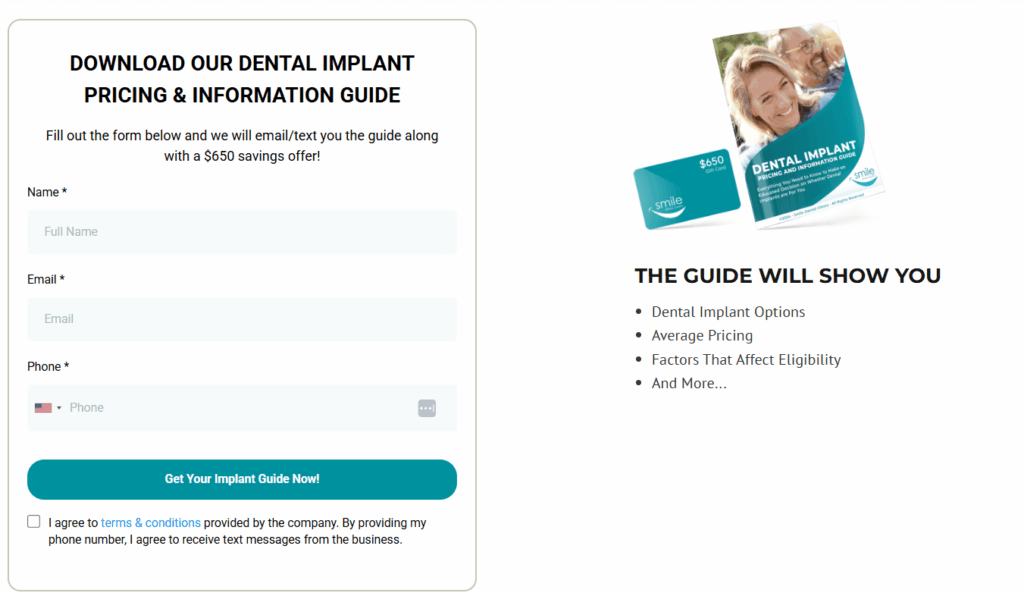
Want to learn more tactics? Read our detailed email list building guide and find what suits you.
4. Deliver engaging content
You’ve probably read a lot of emails in your life and skipped even more. This probably left you wondering: what makes an email truly stand out? Let’s take it from the top.
Subject lines shape first impressions, which makes them invaluable. They should be between 20 and 40 characters for easy readability, especially on mobile devices, and should reflect your email’s purpose. To make them more engaging, consider adding wordplay or a relevant emoji.
Combine your subject line with smart preview text copy, the second line appearing inside the inbox. Offer complementary information about your email content to entice more subscribers to open it.
Next comes the email copy. Start strong with an attention-grabbing headline. Ensure that the rest of your copy adheres to your practice’s tone of voice, reflecting a caring, empathetic, and professional tone. Also, subtly hint at the email goal throughout your copy to encourage interested patients to click.
Here’s an email example from Dr. Mark Burhenne (Ask the Dentist) with instructions on how to reverse small cavities. The tone is informational, direct, and simple to grasp:
Subject line: 🦷 If I had a cavity, here is EXACTLY how I would reverse it
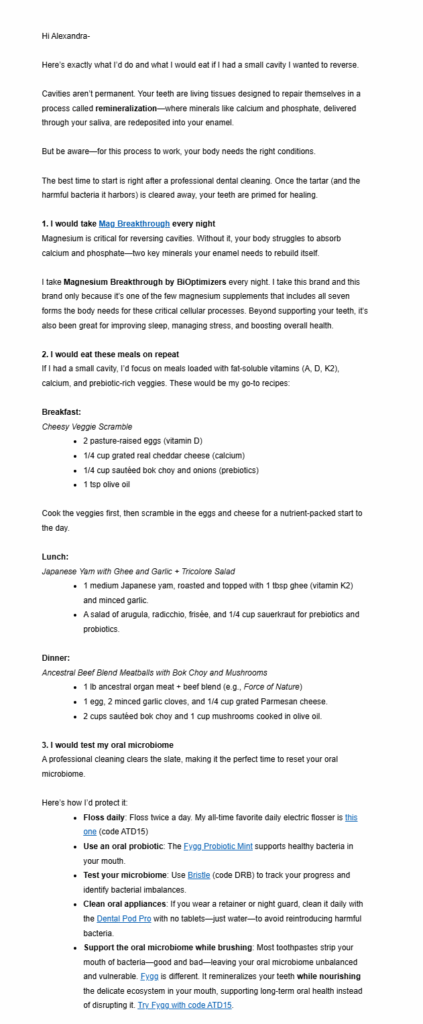
For design, opt for a clean outline and incorporate your brand colors to ensure a consistent experience across all marketing touchpoints. Add white spacing between sections to enhance readability.
Finally, make sure that your call-to-action (CTA) stands out from the rest of the text to increase click-through rates. To save time, choose a premade template from your email or design software and tailor it to your needs.
5. Personalize your emails
One of the biggest assets of email marketing for your dental care practice is personalization. It lets you reach your target audience with tailored messages to maximize patient engagement.
You can add the recipient’s name to the email copy or the subject line to add a personal touch using custom fields. Another approach is to divide your lists into different segments based on shared characteristics, such as services they use or their appointment frequency.
These might include groups for acute versus routine care with different follow-ups or promotional emails. You could also create a VIP list and nurture these recipients with exclusive content and incentives, such as a free consultation, to increase loyal patient satisfaction.
When crafting your personalization strategy, avoid using inferred, sensitive data—especially Protected Health Information (PHI)—in your campaigns. This can be perceived as exploitative and might lead some patients to question your compliance with privacy regulations, such as HIPAA.
For example, don’t send an email about gum disease treatment to a patient just because their records show they’ve been diagnosed with it.
6. Build automated workflows
Automated emails not only save you time but also contribute to building a seamless patient experience. These emails are triggered after specific patient actions, such as signing up for your newsletter or booking an appointment. This time sensitivity makes patients feel reassured and genuinely cared for.
You can also build re-engagement or promotional workflows based on the goals you’ve set. All you need is an email marketing tool with easy-to-use automation capabilities.
For example, many email services offer ready-made automation recipes to simplify the process of building these email sequences. Following simple “if/then” logic, you can choose between pre-made options or set up a custom one from scratch using their editor.
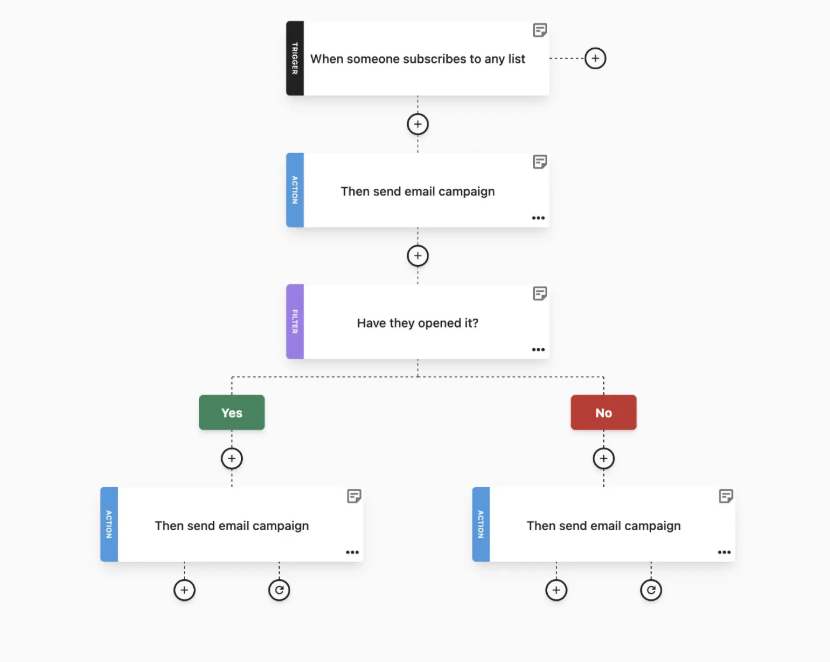
Overall, automation requires an initial learning curve, but once you master it, you’ll be impressed with its benefits for your dental practice.
7. Monitor key performance metrics
To sustain an effective email marketing strategy, it is essential to track key metrics and identify patterns that work, as well as areas for improvement.
Here are the key email metrics to monitor:
- Open rates: Recipients who opened your email.
- Conversions: People who completed a desired action (e.g., booked an appointment).
- Click-through rates (CTR): Subscribers who clicked on a link inside your email.
- Spam complaints: Recipients who marked your email as spam.
- Bounce rates: Percentage of emails that could not be delivered.
For example, by analyzing your open rates, you can identify which subject lines are most effective and understand what captures your audience’s attention.
Most email marketing software offers built-in analytics and reporting tools for this purpose. While you could integrate them with more sophisticated tools like Google Analytics for deeper data insights, the analytics provided by typical email marketing tools are usually sufficient for the dental industry.
8. Use A/B Testing and AI
If you want to experiment with different email elements to find out which suits your audience best, A/B testing is an invaluable tool. For example, you can try out subject lines with varying tones or test different send times to find what appeals to your target audience.
Overall, the more data-informed your strategy is, the better results you’ll see down the road. You can also resort to AI writers to help you analyze patterns or give you suggestions for your industry. Insert clear and specific AI prompts to reach more accurate and safer conclusions.
For instance, instead of a vague “Write an email,” try: “As a dental hygienist, write a concise email to remind patients about their six-month check-up, emphasizing preventative care. Include a clear call to action to book an appointment online, and suggest a friendly, professional tone.”
Grow Your Dental Practice the Email Way
Does email sound like a good idea for your dental care practice? If you follow the steps above, you’ll soon realize that it is. Begin with simpler practices and, as you gain more experience, gradually experiment with automation and more nuanced techniques.
And remember, this marketing tool lets you deliver targeted messages without wasting extra budget and resources. So, instead of allocating that money to less efficient or expensive advertising, you can wisely invest it in tasks that matter more. And most importantly, provide even better care services for your patients.
FAQs
Let’s dive into some frequently asked questions around email marketing for dentists.
1. How can dentists find new clients?
Dentists can use a combination of online and offline marketing tactics, such as local SEO optimization, email marketing, social media, referral programs, and networking.
2. How can dentists measure the success of their email campaigns?
They can track engagement metrics, such as open, click-through, and conversion rates, inside their email software or integrate it with more advanced tools, like Google Analytics.
3. What are the best email marketing strategies for dental practices?
Top dentist email marketing strategies include confirmation emails, educational content, email segmentation, automated workflows, promotional offers, and appointment follow-ups.
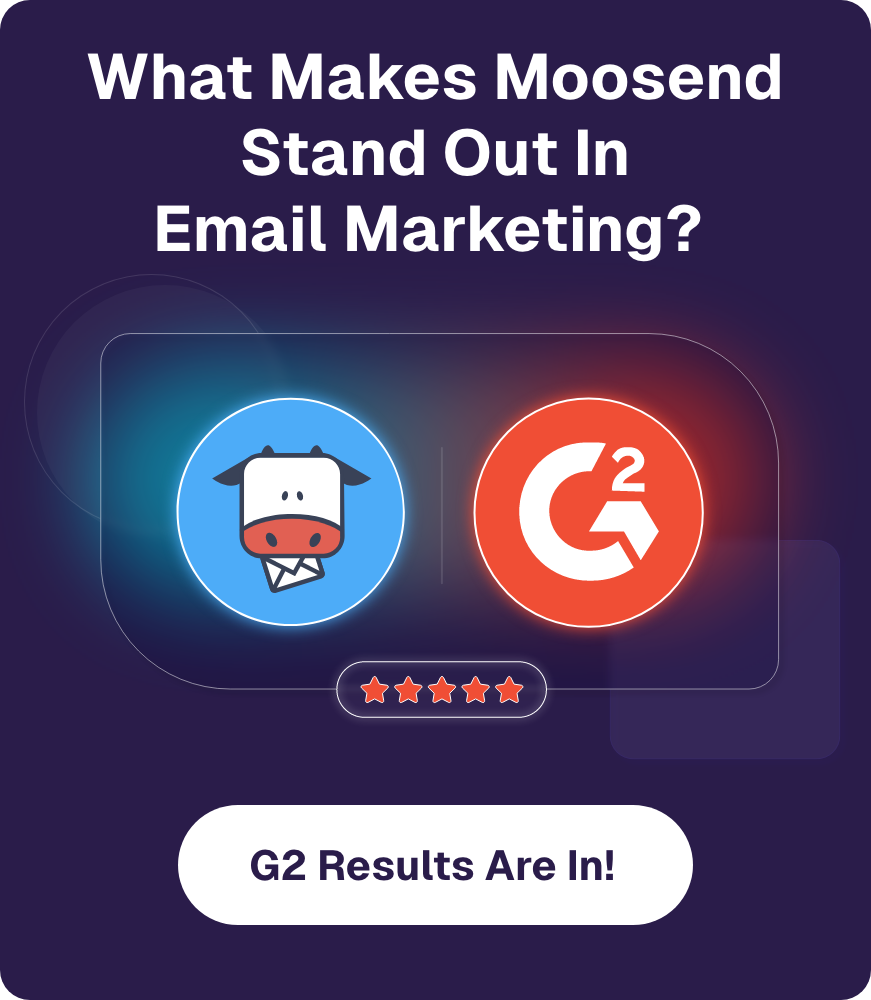

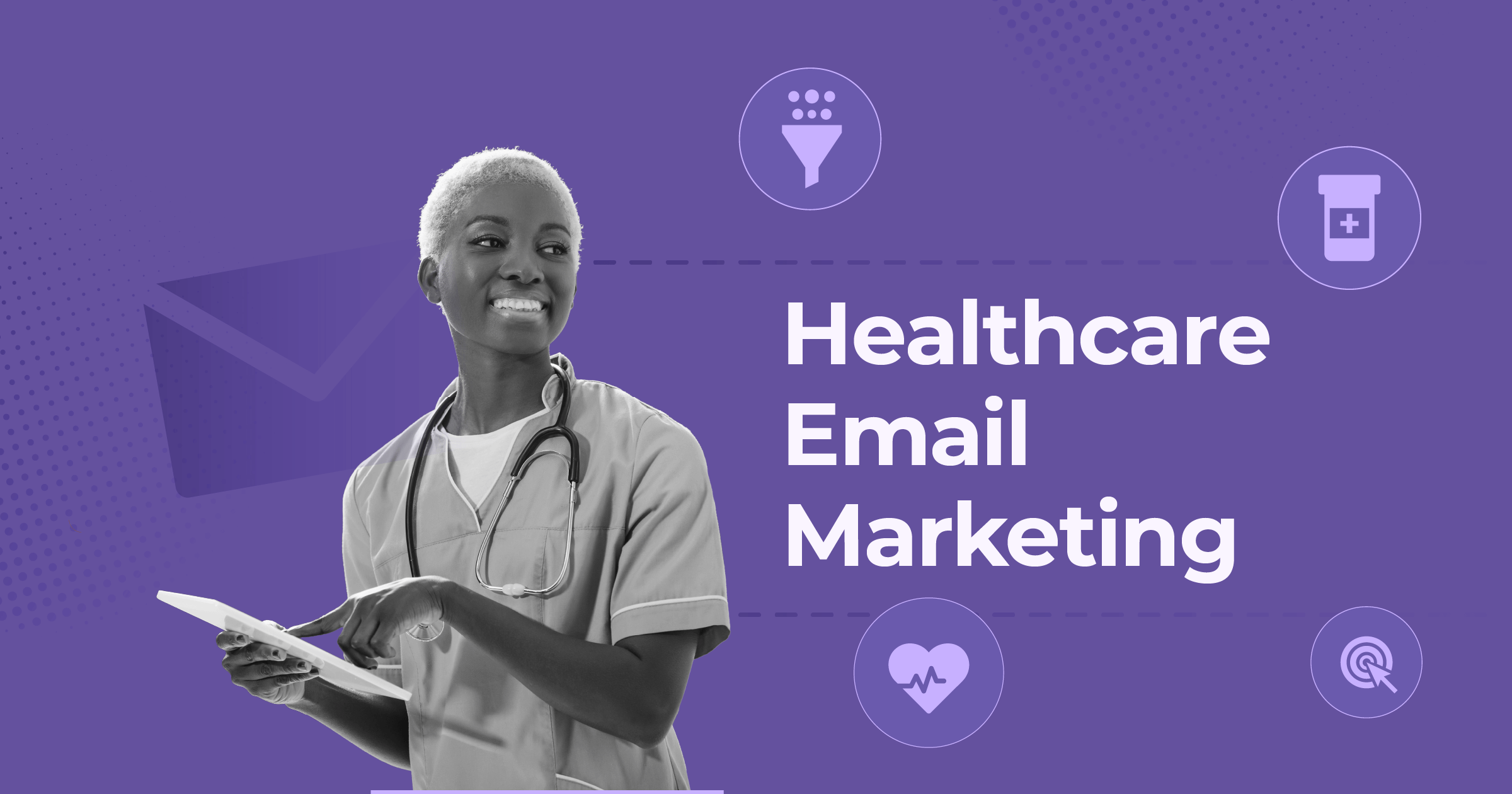
 Published by
Published by

